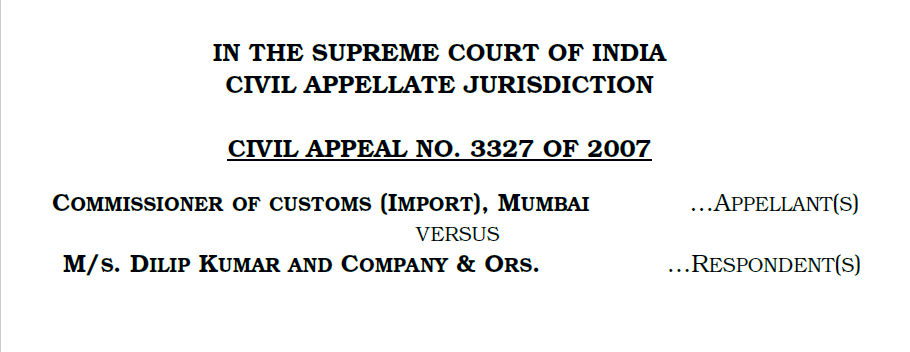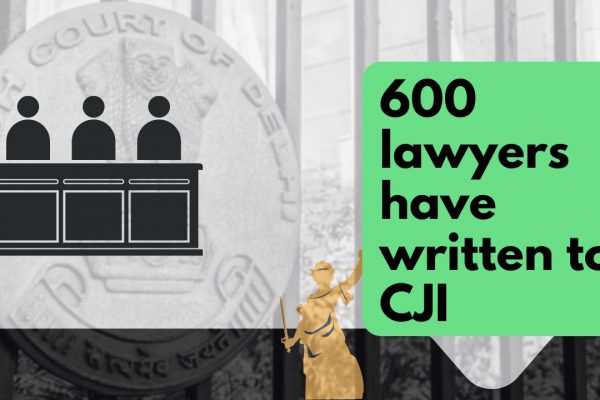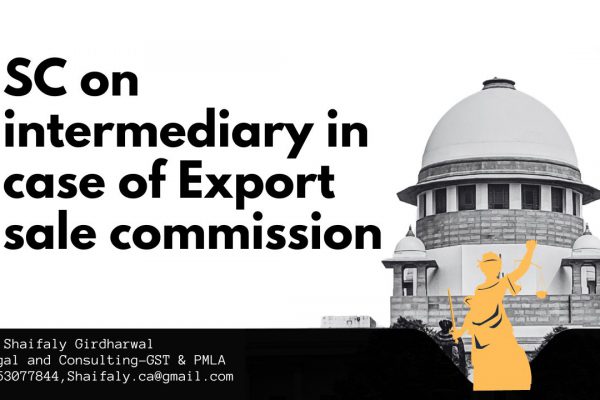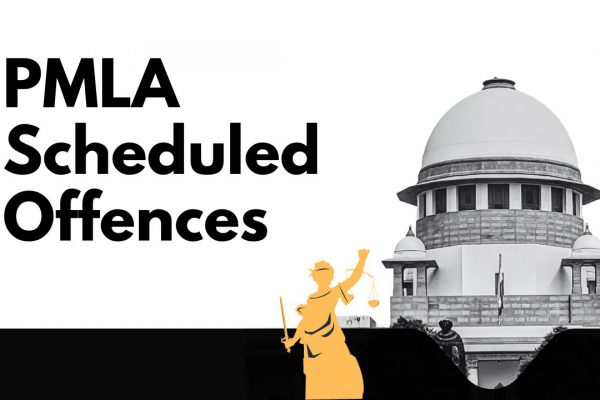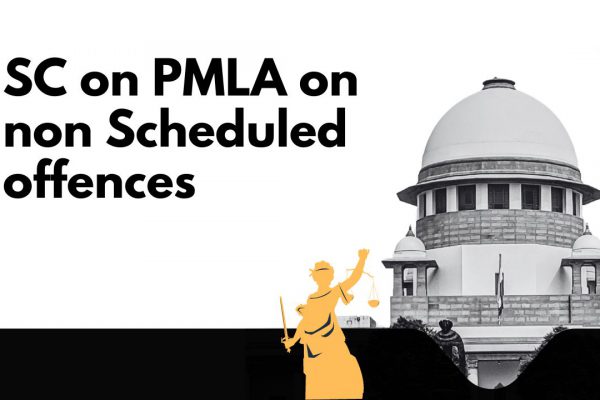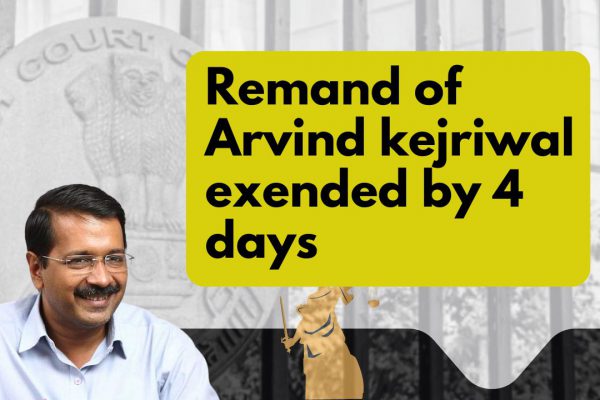Exemption Notifications must be interpreted strictly
Exemption Notifications must be interpreted strictly: The Supreme Court Constitution Bench Judgment
Gist:
Hon’ble Supreme Court of India (“SC”)- Constitution Bench of Five Judges in the case of Commissioner of Customs (Import) Mumbai Vs. M/s Dilip Kumar and Company and Ors have held that the benefit of ambiguity in exemption notification cannot be claimed by the subject/assessee and it must be interpreted in favor of the revenue/state. Exemption notifications are subject to strict interpretation.
Download the full judgment on Commissioner of Customs (Import) Mumbai Vs. M/s Dilip Kumar and Company and Ors case. By clicking the below image:
The 82 pages judgment has been analyzed below:
Question for consideration:
What is the interpretative rule to be applied while interpreting a tax exemption provision/notification when there is an ambiguity as to its applicability with reference to the ‘entitlement’ of the assessee or the ‘rate of tax’ to be applied?
There was an earlier judgment on the same question as follows:
In Sun Export Corporation, Bombay Vs. The collector of Customs, Bombay, (1997) 6 SCC 564 (“Sun Export case”), a three-Judge Bench ruled that an ambiguity in a tax exemption provision or notification must be interpreted so as to favor the assessee claiming the benefit of such exemption.
Sun Export Case (supra) was a case against the judgment of the High Court of Judicature, Bombay. It was concerned with the interpretation of tax exemption notification, being Notification No. 234/1982-CE, dated 01.11.1982, issued by the Central Government under subsection (1) of Section 25 of the Customs Act. The High Court considered the issue of whether Vitamin AD-3 mix (feed grade)/animal feed supplement could be included under the head ‘animal feed, including compound livestock feed’. The Bombay High Court decided, in the affirmative, in favor of the assessee. The case then landed in this Court, which was persuaded to expand the meaning of ‘animal feed’ in the light of subsequent notification issued in 1984, which largely expanded the scope of the exemption to the effect that ‘animal feed, including compound livestock feed, animal feed supplements, and animal feed concentrates’. This Court indeed countenanced the plea, namely, whenever there is ambiguity as to whether the subject matter was included or not, then the benefit of the same should be conferred on the assessee.
The relevant portion in Sun Export Case (supra), reads as follows:
“We are in agreement with the above view expressed by the Bombay High Court. …. Even assuming that there are two views possible, it is well settled that one favorable to the assessee in matters of taxation has to be preferred.”
After referring to the above judgment, SC dealt with the present case as follows:
Facts of the present case:
The respondents (M/s Dilip Kumar and Company and Ors) imported a consignment of Vitamin-E50 powder (feed grade) in 1999. They claimed the benefit of concessional rate of duty at 5%, instead of standard 30%, as per the Customs Notification No. 20/1999 and classified the product under Chapter 2309.90 which admittedly pertains to prawn feed. They relied on the ratio in Sun Export Case (supra) and claimed the benefit of the exemption. The benefit of Customs Notification No. 20/1999 was, however, denied to the respondents on the plea of the department that the goods under import contained chemical ingredients for animal feed and not animal feed/prawn feed, as such, the concessional rate of duty under the extant notification was not available.
The department classified the consignment under Chapter 29 which attracts the standard rate of customs duty. The adjudicating authority, namely, the Assistant Commissioner of Customs, distinguished Sun Export Case (supra), while accepting the plea of the department to deny the concessional rate. The Commissioner of Customs (Appeals) reversed the order of the Assistant Commissioner and came to the conclusion that Sun Export Case (supra) was indeed applicable. The department then approached the Customs, Excise and Service Tax Tribunal (CESTAT), which affirmed the order of the Commissioner of Customs (Appeals). Aggrieved thereby, the present appeal is filed.
General principles of interpretation (including of taxation law) were observed as follows:
It is well-settled principle that when the words in a statute are clear, plain and unambiguous and only one meaning can be inferred, the Courts are bound to give effect to the said meaning irrespective of consequences. If the words in the statute are plain and unambiguous, it becomes necessary to expound those words in their natural and ordinary sense. The words used declare the intention of the Legislature. In Kanai Lal Sur v. Paramnidhi Sadhukhan, AIR 1957 SC 907, it was held that if the words used are capable of one construction only then it would not be open to the Courts to adopt any other hypothetical construction on the ground that such construction is more consistent with the alleged object and policy of the Act.
In applying the rule of plain meaning any hardship and inconvenience cannot be the basis to alter the meaning to the language employed by the legislation. This is especially so in fiscal statutes and penal statutes. Nevertheless, if the plain language results in absurdity, the Court is entitled to determine the meaning of the word in the context in which it is used keeping in view the legislative purpose. Not only that, if the plain construction leads to anomaly and absurdity, the court having regard to the hardship and consequences that flow from such a provision can even explain the true intention of the legislation. Having observed general principles applicable to statutory interpretation, it is now time to consider rules of interpretation with respect to taxation.
In construing penal statutes and taxation statutes, the Court has to apply the strict rule of interpretation. The penal statute which tends to deprive a person of right to life and liberty has to be given the strict interpretation or else many innocents might become victims of discretionary decision making. Insofar as taxation statutes are concerned, Article 265 of the Constitution prohibits the State from extracting tax from the citizens without authority of law. It is axiomatic that taxation statute has to be interpreted strictly because State cannot at their whims and fancies burden the citizens without authority of law. In other words, when competent Legislature mandates taxing certain persons/certain objects in certain circumstances, it cannot be expanded/interpreted to include those, which were not intended by the Legislature.
It is to be noted that the principle of ‘literal interpretation’ and the principle of ‘strict interpretation’ are sometimes used interchangeably. This principle, however, may not be sustainable in all contexts and situations. There is certainly scope to sustain an argument that all cases of literal interpretation would involve the strict rule of interpretation, but strict rule may not necessarily involve the former, especially in the area of taxation. The decision of this Court in Punjab Land Development and Reclamation Corporation Ltd., Chandigarh v. Presiding Officer, Labour Court Chandigarh and Ors., (1990) 3 SCC 682, made the said distinction, and explained the literal rule-
“The literal rules of construction require the wording of the Act to be construed according to its literal and grammatical meaning whatever the result may be. Unless otherwise provided, the same
word must normally be construed throughout the Act in the same sense, and in the case of old statutes regard must be had to its contemporary meaning if there has been no change with the passage of time.” Strict interpretation does not encompass strict-literalism into its fold. It may be relevant to note that simply juxtaposing ‘strict interpretation’ with ‘literal rule’ would result in ignoring an important aspect that is ‘apparent legislative intent’. We are alive to the fact that there may be overlapping in some cases between the aforesaid two rules. With certainty, we can observe that ‘strict interpretation’ does not encompass such literalism, which leads to absurdity and go against the legislative intent. As noted above, if literalism is at the far end of the spectrum, wherein it accepts no implications or inferences, then ‘strict interpretation’ can be implied to accept some form of essential inferences which literal rule may not accept.
Justice G.P. Singh, in his treatise ‘Principles of Statutory Interpretation’ after referring to various SC Judgments stated “…..In all tax matters, one has to interpret the taxation statute strictly…”.
It is well settled that in a taxation statute, there is no room for any intendment; that regard must be had to the clear meaning of the words and that the matter should be governed wholly by the language of the notification. Equity has no place in the interpretation of a tax statute. Strictly one has to look to the language used; there is no room for searching intendment nor drawing any presumption. Furthermore, nothing has to be read into nor should anything be implied other than essential inferences while considering a taxation statute.
In the case of State of West Bengal vs. Kesoram Industries Limited, (2004) 10 SCC 201, seven judges bench of SC after citing the passages from Justice G.P. Singh’s treatise, summed up the following principles applicable to the interpretation of a taxing statute: “(i) In interpreting a taxing statute, equitable considerations are entirely out of place. A taxing statute cannot be interpreted on any presumption or assumption. A taxing statute has to be interpreted in the light of what is clearly expressed; it cannot imply anything which is not expressed; it cannot import provisions in the statute so as to supply any deficiency; (ii) Before taxing any person, it must be shown that he falls within the ambit of the charging section by clear words used in the section; and (iii) If the words are ambiguous and open to two interpretations, the benefit of interpretation is given to the subject and there is nothing unjust in a taxpayer escaping if the letter of the law fails to catch him on account of Legislature’s failure to express itself clearly”.
Now in respect of core issue, it was observed:
In the judgment of two learned Judges in Union of India v. Wood Papers Limited, (1990) 4 SCC 256, a distinction between stage of finding out the eligibility to seek exemption and stage of applying the nature of exemption was made. Relying on the decision in Collector of Central Excise vs. Parle Exports (P) Ltd., (1989) 1 SCC 345, it was held “Do not extend or widen the ambit at the stage of applicability. But once that hurdle is crossed, construe it liberally”. The reasoning for arriving at such conclusion is found in para 4 of Wood Papers Ltd. Case (supra), which reads-
“… Literally, exemption is freedom from liability, tax or duty. Fiscally, it may assume varying shapes, especially, in a growing economy. For instance, tax holiday to new units, concessional rate of tax to goods or persons for the limited period or with the specific objective etc. That is why its construction, unlike charging provision, has to be tested on the different touchstone. In fact, an exemption provision is like an exception and on the normal principle of construction or interpretation of statutes it is construed strictly either because of legislative intention or on economic justification of inequitable burden or progressive approach of fiscal provisions intended to augment State revenue. But once exception or exemption becomes applicable no rule or principles requires it to be construed strictly. Truly speaking liberal and strict construction of an exemption provision are to be invoked at different stages of interpreting it. When the question is whether a subject falls in the notification or in the exemption clause then it being in nature of exception is to be construed strictly and against the subject, but once ambiguity or doubt about applicability is lifted and the subject falls in the notification then full play should be given to it and it calls for a wider and liberal construction…”
The Constitution Bench in the case of Commissioner of Central Excise, New Delhi v. Hari Chand Shri Gopal, (2011) 1 SCC 236 followed the ratio of in Hansraj Gordhandas Case (supra), to reiterate the law on the aspect of the interpretation of exemption clause in para 29 as follows:
“The law is well settled that a person who claims exemption or concession has to establish that he is entitled to that exemption or concession. A provision providing for an exemption, concession or exception, as the case may be, has to be construed strictly with certain exceptions depending upon the settings on which the provision has been placed in the statute and the object and purpose to be achieved. If the exemption is available on complying with certain conditions, the conditions have to be complied with. The mandatory requirements of those conditions must be obeyed or fulfilled exactly, thought at times, some latitude can be shown, if there is the failure to comply with some requirements which are the directory in nature, the non-compliance of which would not affect the essence or substance of the notification granting the exemption.“
“…The critical question to be examined is whether the requirements relate to the “substance” or “essence” of the statute if so, strict adherence to those requirements is a precondition to give effect to that doctrine. On the other hand, if the requirements are procedural or directory in that they are not of the “essence” of the thing to be done but are given with a view to the orderly conduct of business, they may be fulfilled by substantial, if not strict compliance. …”
Finally, it was held in the present case as under:
The ratio in Sun Export case (supra) is not correct and all the decisions which took the similar view as in Sun Export Case (supra) stand overruled.
Exemptions from taxation have the tendency to increase the burden on the other unexempted class of taxpayers. A person claiming exemption, therefore, has to establish that his case squarely falls within the exemption notification, and while doing so, a notification should be construed against the subject in case of ambiguity.
Every taxing statue including, charging, computation and exemption clause (at the threshold stage) should be interpreted strictly. Further, in case of ambiguity in a charging provision, the benefit must necessarily go in favor of subject/assessee, but the same is not true for an exemption notification wherein the benefit of ambiguity must be strictly interpreted in favor of the Revenue/State.
Comments/Concluding Remarks:
Under GST law also, there are various exemption notifications issued. One such can be notification no. 45- Central Tax (Rate) where the supplier can charge concessional rate of 5% where specified goods are supplied to specified recipients such as research institutions, public funded research institutions, IIT, medical centers, universities etc. on the basis certificates furnished. Post this judgment it clearly signifies that if the goods do not fall within the list of specified goods or list of specified recipients, benefit of concessional rate can be denied to the supplier (even when the certificates are furnished) since responsibility to determine whether said supply squarely falls within the purview of exemption notification is cast on the supplier.
References
Supreme Court Judgment in the case of Commissioner of Customs (Import), Mumbai Versus M/s. Dilip Kumar And Company & Ors. (Civil Appeal No. 3327 OF 2007).
Regards,
Shivashish Karnani
+91-9818472772 / ca.shivashish@gmail.com
If you already have a premium membership, Sign In.
 CA Shivashish Karnani
CA Shivashish Karnani


